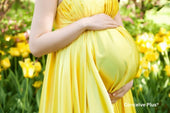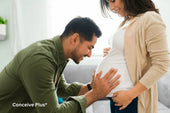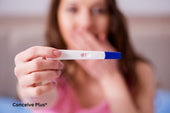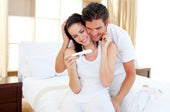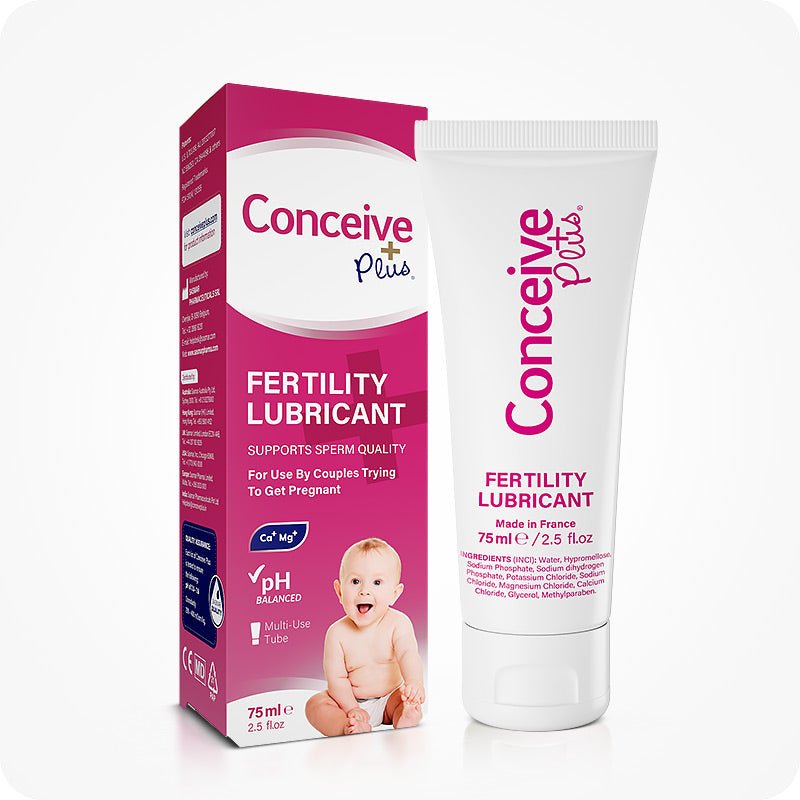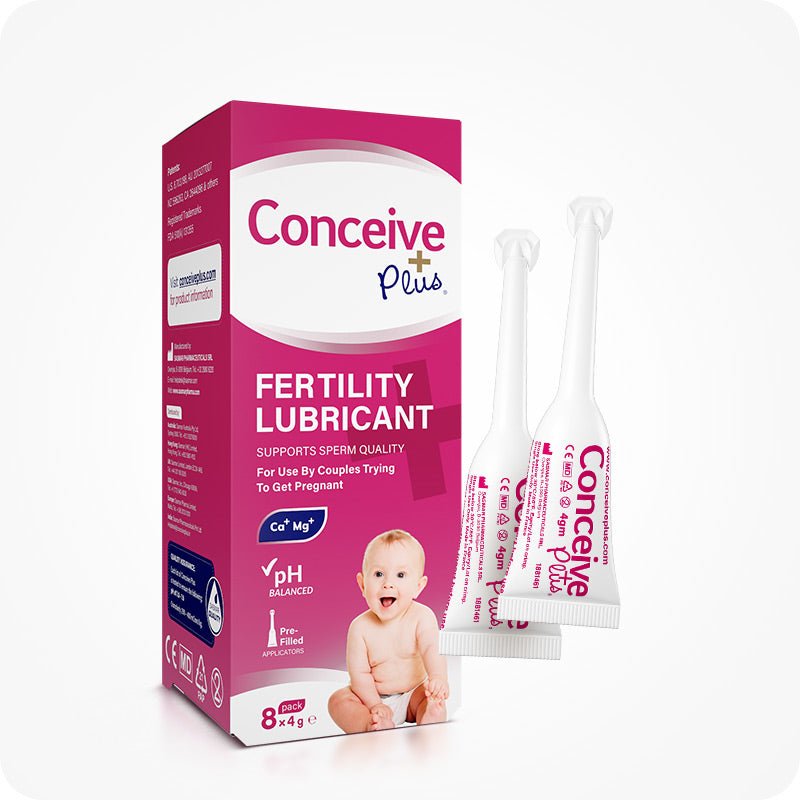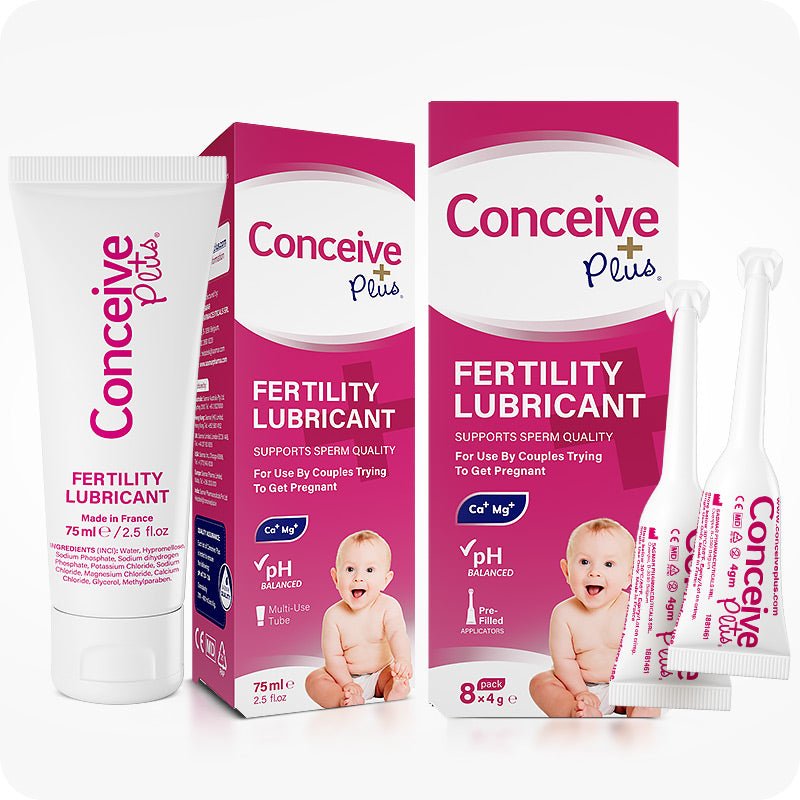A Complete Guide for Ladies Wanting to Get Pregnant Naturally

Many ladies wanting to get pregnant believe it will happen in a blink, though it sometimes needs more time. Some are pleasantly surprised when it clicks on the first try, while others keep waiting cycle after cycle. That difference can be confusing and a bit frustrating, yet it’s normal.
Understanding your body plus its signals may calm your nerves. Hormones shift monthly, guiding ovulation and the possibility of fertility and pregnancy. If she wants to get pregnant soon, it helps to track patterns and see which habits shape a healthy environment for conception [1].
It’s also wise to remember a partner’s lifestyle matters, since sperm health influences success. Each person is unique, making the journey unpredictable. Whether brand new or experienced, you can try practical steps.
By caring for your health, adjusting small habits, and staying informed, any woman wants to get pregnant might raise her odds. Some find it quick, others require patience. That’s okay. Keep an open mind, watch your progress, and realize every small choice counts.
Master the Calendar: Tracking Your Cycle
Countless women looking to get pregnant have different cycle lengths—some revolve around 28 days, others are 30-plus or slightly shorter. Pinpointing ovulation is essential because it’s typically about two weeks before a period.
That egg only remains viable for roughly a day, though sperm can live up to five days. Timing intercourse around that window helps, as the odds of meeting egg and sperm are higher. Some prefer tracking cervical mucus, which often looks clear and stretchy near ovulation. Others rely on predictor kits that detect hormone surges [2].
If your cycle is irregular, these tools bring clarity, revealing hidden patterns over several months. Of course, stress or a cold can disrupt normal signals, so perfection isn’t expected. Still, consistent logging gradually highlights a personal rhythm.
If you match intercourse to that fertile zone, you might see results faster. It’s no guarantee, but it can definitely improve chances. Don’t stress if it’s not exact on your first try. Many discover that with patience, their notes eventually guide them well.
Feed Your Fertility: Crucial Nutrients
A balanced pregnancy diet plan is often a foundation for fertility and pregnancy. Folic acid is famous for supporting early fetal development, so many start taking it a few months prior. Then there’s vitamin D, vitamin E, and vitamin C, each providing antioxidant or hormonal perks [3].
B vitamins help with metabolism and energy, which in turn can stabilize ovulation. Minerals deserve attention, too. Iron carries oxygen, so a deficiency might sap energy or cause erratic cycles. Zinc influences hormone regulation and may keep immune defenses strong [4].
Magnesium can lessen mild stress and help with muscle function, while iodine supports thyroid balance. Some also mention CoQ10 for potential egg quality improvement. Myo-inositol might aid if hormone imbalances exist. L-arginine might encourage circulation [5].
People sometimes add ginger or maca root, though evidence varies. If you suspect your eating plan lacks something, consider a professional consult. Real foods should be the main source, but supplements help fill gaps.
Overall, these nutrients can boost a woman wants to get pregnant by nurturing a supportive environment for conception.
Hit the Mark: Smart Timing
Even if everything else looks good, missing that narrow fertilization window may stall progress. Many couples try intercourse every other day around ovulation. Others do it daily for a few days, if they have the energy and time.
If she wants to get pregnant but has no clue when ovulation occurs, temperature charting or ovulation predictor kits can guide. Basal body temperature often rises slightly right after ovulation, so that data helps confirm the egg’s release [6].
LH kits, on the other hand, detect a surge that precedes egg release by roughly 24-36 hours. Some folks mix both methods to avoid guesswork. Keep in mind that stress or illness can throw a cycle off. That’s normal.
Even the best trackers might have an off month. The point is to ensure sperm and egg overlap. If you’re uncertain, aim for a span of time each month where intercourse is more frequent.
Stay flexible, because bodies aren’t always clockwork. Overcomplicating it can spark anxiety, so find a routine that feels comfortable.
Nourish to Flourish: Better Diet
Diet can shape everything from hormone function to energy levels, which might matter for ladies wanting to get pregnant. A plan built around fruits, vegetables, whole grains, lean proteins, and healthy fats encourages stable blood sugar and stable mood.
Highly processed items with excessive sugar or salt may undermine overall health, so it’s wise to keep them limited [7]. Consider fish or algae sources of omega-3 if you rarely eat seafood. Some folks plan weekly meals to avoid impulsive junk food runs.
Simple steps like swapping soda for water can also help. If you follow a specialized diet—say vegetarian—watch for low iron or B12 [8]. Over time, balanced meals support normal cycles and might help the entire reproductive system.
Don’t feel forced to follow extreme diets. A moderate approach works for most. Stay hydrated and eat mindfully, so you can keep a consistent intake of nutrients that might support fertility and pregnancy.
These small choices often add up, even if results aren’t immediate.
Find the Balance: Weight Check
Being significantly overweight or underweight can disturb hormones. Extra pounds sometimes raise estrogen levels, confusing ovulation. Meanwhile, underweight individuals may skip periods altogether.
If women that want to get pregnant suspect weight could be an issue, a gradual approach is best. Crash diets or overly intense workouts add stress. Instead, slow weight loss or gain, paired with gentle exercise, can help the body adapt [9].
Taking walks, doing mild aerobic classes, or light strength training might keep everything balanced. If you’re uncertain about portion sizes or nutrients, speak with a dietitian.
Partners can also benefit from moderate changes, since men’s sperm quality can be impacted by weight and nutrition [10]. Maintaining a middle ground supports normal cycles.
It’s not an instant fix, but it may reduce one common barrier to conceiving. Keep track of how you feel rather than just a number on the scale. Sometimes, improvements in mood or energy are early signs you’re on a better path.
Calm the Mind: Stress Relief
Prolonged stress might mess with hormonal signals. Some women who want to get pregnant find their cycles get shorter or more erratic when life’s hectic. Simple relaxation methods, like slow breathing or journaling, can ease daily tension and support a healthier pregnant time.
A hot bath or mild yoga session might calm frazzled nerves. If it’s overwhelming, a counselor could help you untangle worries and find coping strategies. Remember, stress can zap interest in intimacy [11].
Then timing intercourse well becomes harder. Communication with a partner can reduce misunderstandings. If the pressure of trying feels heavy, talk it through. Plan date nights that have nothing to do with conception.
That variety helps you both reconnect. Meanwhile, your body might interpret high stress as a less ideal time to conceive, so it stalls ovulation [12]. A calmer routine possibly leads to better hormone stability.
While no magic trick can erase tension, consistent self-care often pays off.
The Bottom Line
When ladies wanting to get pregnant prioritize cycle awareness, balanced nutrients, stable weight, and stress control, they frequently notice improvements. Granted, you can do all of that and still wait.
Some conceive within a few months, while others might need a year or more. Both situations are within normal range. Every small step—like upping leafy greens or reducing sugary drinks—gradually fosters a healthier environment for a future baby.
If it remains elusive, consult a pro, as thyroid issues or other conditions can lurk undetected [13]. Don’t overlook a partner’s role, either. Lifestyle changes that aid sperm health matter a lot.
If the road feels long, know you’re not alone. Many share similar struggles and eventually see progress. It’s about consistent effort and learning what works best for you.
That big reward—a new family addition—may make the wait worthwhile. Keep hopeful, adapt as needed, and trust that your body often responds to positive changes.
FAQs
Is supplementation always necessary if I eat healthy?
It depends. Certain nutritional gaps might persist, so a blood test could confirm if you’re missing key elements.
Why track my cycle if it seems regular?
Subtle shifts can reveal your precise fertile window, boosting chances by timing intercourse around egg release.
Can stress alone halt conception?
Extreme anxiety can disrupt hormone signals, but it’s rarely the only factor. Easing stress often normalizes cycles.
Should my partner also adjust diet and lifestyle?
Yes, because sperm quality matters. Cutting toxins and eating well can improve fertilization odds.
How long should I wait before seeking help?
If you’re under 35, many experts suggest a year. Over 35, maybe six months. But if you sense something’s off, listen to your instincts.
Citations
- Simmons, R. G., & Jennings, V. (2020). Fertility awareness-based methods of family planning. Best practice & research. Clinical obstetrics & gynaecology. Available at: https://pubmed.ncbi.nlm.nih.gov/32169418/
- Su, H. W., Yi, Y. C., Wei, T. Y., Chang, T. C., & Cheng, C. M. (2017). Detection of ovulation, a review of currently available methods. Bioengineering & translational medicine. Available at: https://pmc.ncbi.nlm.nih.gov/articles/PMC5689497/
- Ruder, E. H., Hartman, T. J., Blumberg, J., & Goldman, M. B. (2008). Oxidative stress and antioxidants: exposure and impact on female fertility. Human reproduction update. Available at: https://pubmed.ncbi.nlm.nih.gov/18535004/
- Fallah, A., Mohammad-Hasani, A., & Colagar, A. H. (2018). Zinc is an Essential Element for Male Fertility: A Review of Zn Roles in Men's Health, Germination, Sperm Quality, and Fertilization. Journal of reproduction & infertility. Available at: https://pmc.ncbi.nlm.nih.gov/articles/PMC6010824/
- Bodis, J., Farkas, B., Nagy, B., Kovacs, K., & Sulyok, E. (2022). The Role of L-Arginine-NO System in Female Reproduction: A Narrative Review. International journal of molecular sciences. Available at: https://pmc.ncbi.nlm.nih.gov/articles/PMC9735906/
- Ecochard, R., Boehringer, H., Rabilloud, M., & Marret, H. (2001). Chronological aspects of ultrasonic, hormonal, and other indirect indices of ovulation. BJOG : an international journal of obstetrics and gynaecology. Available at: https://pubmed.ncbi.nlm.nih.gov/11510707/
- Gaskins, A. J., Colaci, D. S., Mendiola, J., Swan, S. H., & Chavarro, J. E. (2012). Dietary patterns and semen quality in young men. Human reproduction (Oxford, England). Available at: https://pubmed.ncbi.nlm.nih.gov/22888168/
- Pawlak, R., Lester, S. E., & Babatunde, T. (2014). The prevalence of cobalamin deficiency among vegetarians assessed by serum vitamin B12: a review of literature. European journal of clinical nutrition. Available at: https://pubmed.ncbi.nlm.nih.gov/24667752/
- Clark, A. M., Thornley, B., Tomlinson, L., Galletley, C., & Norman, R. J. (1998). Weight loss in obese infertile women results in improvement in reproductive outcome for all forms of fertility treatment. Human reproduction (Oxford, England). Available at: https://pubmed.ncbi.nlm.nih.gov/9688382/
- Sermondade, N., Faure, C., Fezeu, L., Shayeb, A. G., Bonde, J. P., Jensen, T. K., Van Wely, M., Cao, J., Martini, A. C., Eskandar, M., Chavarro, J. E., Koloszar, S., Twigt, J. M., Ramlau-Hansen, C. H., Borges, E., Jr, Lotti, F., Steegers-Theunissen, R. P., Zorn, B., Polotsky, A. J., La Vignera, S., … Czernichow, S. (2013). BMI in relation to sperm count: an updated systematic review and collaborative meta-analysis. Human reproduction update. Available at: https://pubmed.ncbi.nlm.nih.gov/23242914/
- Hamilton, L. D., & Meston, C. M. (2013). Chronic stress and sexual function in women. The journal of sexual medicine. Available at: https://pubmed.ncbi.nlm.nih.gov/23841462/
- Vigil, P., Meléndez, J., Soto, H., Petkovic, G., Bernal, Y. A., & Molina, S. (2022). Chronic Stress and Ovulatory Dysfunction: Implications in Times of COVID-19. Frontiers in global women's health. Available at: https://pmc.ncbi.nlm.nih.gov/articles/PMC9168655/
- Poppe, K., Velkeniers, B., & Glinoer, D. (2007). Thyroid disease and female reproduction. Clinical endocrinology. Available at: https://pubmed.ncbi.nlm.nih.gov/17302862/







